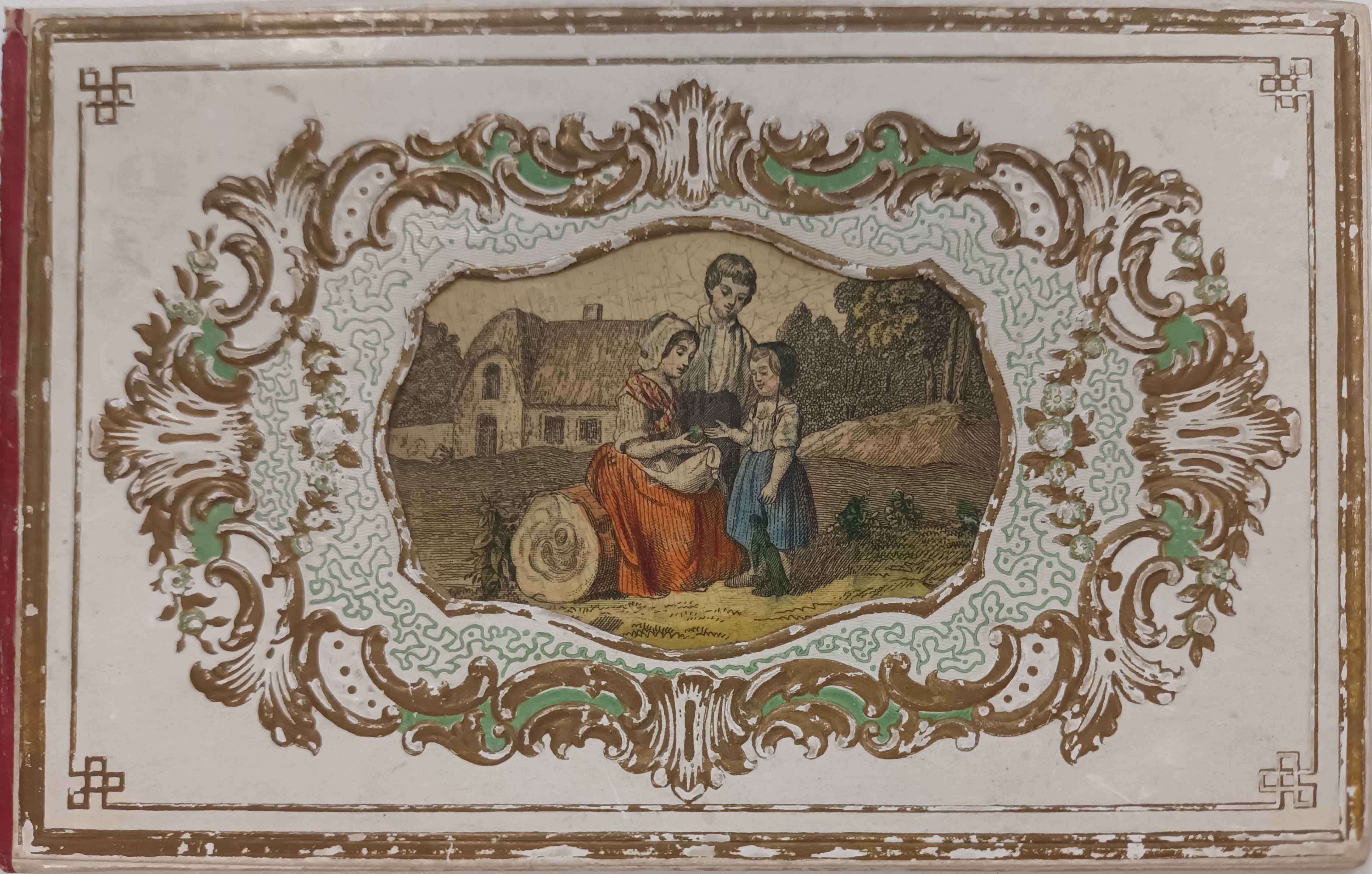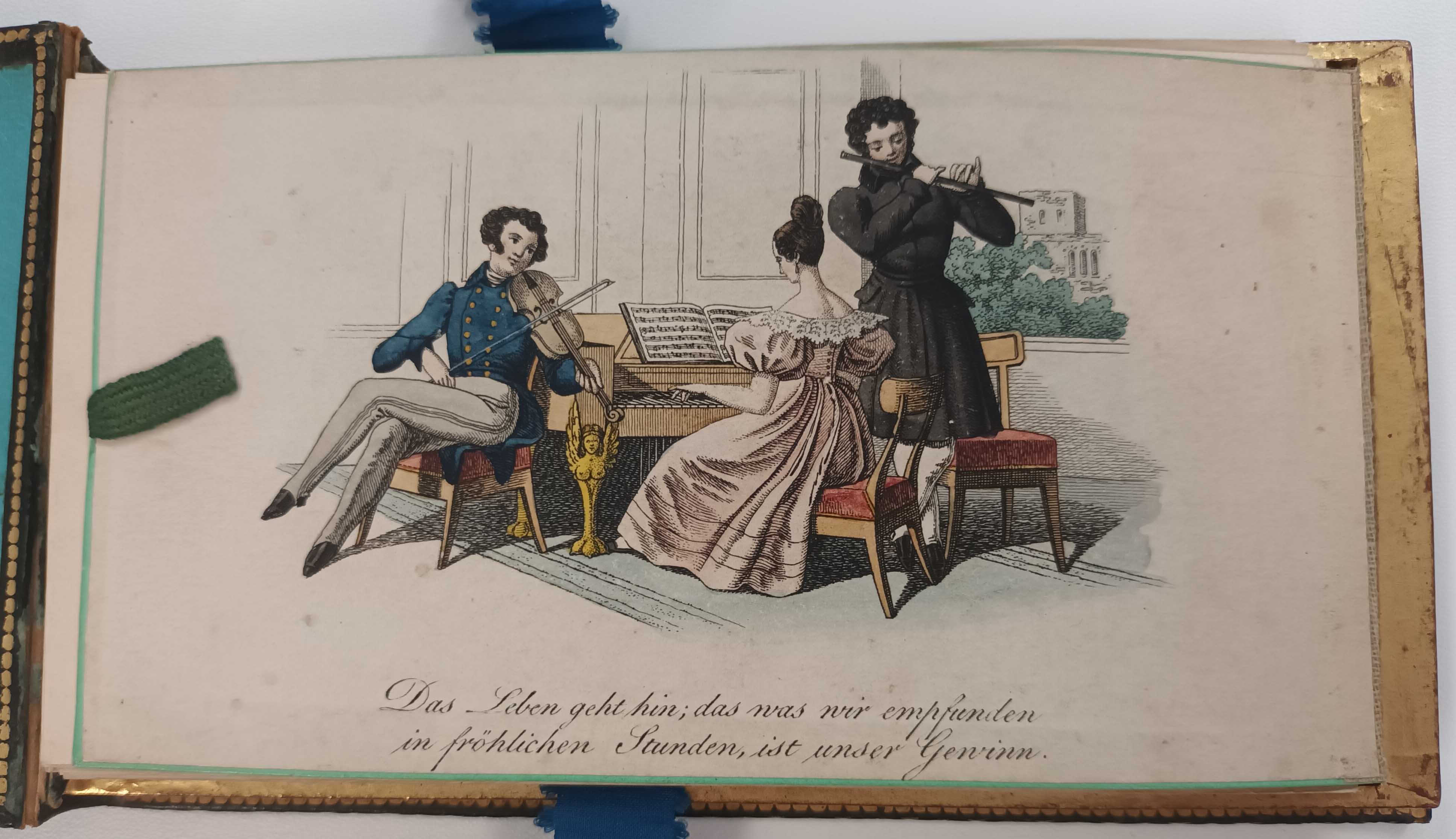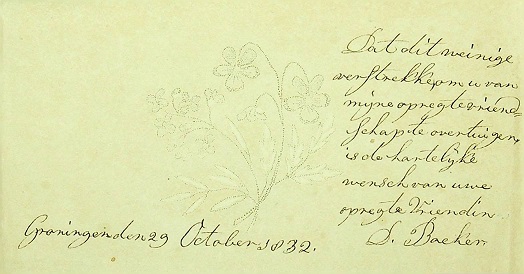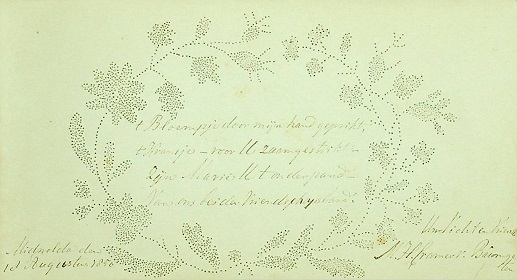Alba Amicorum: social media before the term was even coined
These days, anyone who wants to be kept in the loop, put themselves on the map, or keep in touch with relatives has almost no other option than to use WhatsApp, Facebook, LinkedIn, and Instagram. But what many people are not aware of is that these forms of social media were actually preceded by ‘alba amicorum’ (friendship books).
As early as the second half of the sixteenth century, students often took an album with them on their peregrinatio academica (a tour of prestigious universities). They would collect inscriptions (poems, philosophical quotations, personal mottos, coats of arms of noblemen, and signatures) from fellow students and famous professors. The custom originated in Germany, where it is closely associated with the Protestant University of Wittenberg, home of the earliest alba. The Germans also refer to an album amicorum as a Stammbuch, Gesellenbuch, or a Gedenkbuch. In the Netherlands, an album amicorum is also called a vriendenrol (roll of friends) – the precursor of what we know today as the poesiealbum (poetry book) and the vriendenboekje (book of friends). In France, this type of album is also called a souvenir d'amitié.

Alba amicorum are interesting research objects because they offer a glimpse into the network – and therefore the world – of the album owner. They may also contain unique poems and portraits; poets would sometimes inscribe a poem, and illustrators would draw a portrait or other artwork. From a historical perspective, alba are often a valuable document of the times. For example, the influence of politics is clearly visible in the alba created by prisoners held in Huis ten Bosch during the Patriot rebellions in 1798. Some albums even survived the Second World War.
In recent years, the Special Collections department has added several exceptional alba amicorum to its collection. Former curator Gerda Huisman regularly wrote about them in her blogs on De wereld aan boeken . More recently, the department has acquired several alba dating from the eighteenth and nineteenth centuries that do not deserve to be forgotten in the vault. Although these alba reflect and confirm the prevailing perception of books compiled by students and the bourgeoisie, each and every one of them is unique.
The owners of two of these books are unknown. Those who contributed to an album sometimes neglected to mention the name of the owner of the album, making it difficult to trace to whom the album belonged. By studying the names of the inscribers, researchers were able to determine that a recently acquired album (from 1795) may have belonged to Nesina Johanna Henderika Haselhoff from Meppel. Another album (from 1826), bearing the inscription ‘souvenir d’amitié’, may have belonged to ‘Naatje’, as several friends called her. Her full name is not mentioned.
Both alba contain short poems in French, German, or Dutch celebrating friendship. Many of the contributions are accompanied by colourful illustrations, embroideries, or braids and by a short motto (also called ‘symbolum’ in alba), such as ‘dedicated to friendship’, ‘amitié pour guide’, or ‘toujours la même’. One of Naatje’s friends wrote a slightly longer motto: ‘Le temps qui change tout; change aussi mon humeur; mais envers mes amies; bien ne change mon coeur’. [Time changes everything, even how I feel, but when it comes to my friends, nothing changes my heart.]
In 1832, student Job Suardus Posthuma from Drachten kept an album containing contributions primarily from fellow students. The Album Studiosorum Academiae Groninganae – the album in which the rector of the university recorded the name, date of enrolment, field of study, and place of origin of each student – reveals that he studied medicine in Groningen and obtained his doctorate in 1835. Job's album contains a series of memorabilia from an unknown friend – quite unusual for an album. The writer recalled memories of their student days: ‘Frans is a candidate! Drink!’, ‘ the fire, how or when the old ones sat in the eaves’, and reflected on ‘the hundred and thirty hours in which [they] sat together’.
Pieter Eppes Tonkes also had an album when he was a student at the University of Groningen. In his Denkmahl der Freundschaft (from 1833), as it says on the cover, there are only four inscriptions. In those days, alba were rarely compiled or used by students. In Pieter's album, there are no inscriptions by professors; in previous centuries, however, they were quite willing to contribute. It is therefore really quite extraordinary that the Special Collections department now has two alba that belonged to former students of the university from a time when alba were hardly ever used. The contributions in this album were heartfelt. For example, Willem Gleuns, who also appears in the Album Studiosorum, wrote a poem of no fewer than 40 lines in which he reminisces about their friendship trip to Germany, a trip which he says is a metaphor for life:
‘And that journey, my friend! It's the mirror of our days;
Now bathed in the most splendid light's embrace,
We stroll joyfully, by Zephyrs gently swayed,
Our gaze fixed on the journey's intended place.’
We also know the names of the owners of two other alba amicorum. Maria Helena Broese received her album from her brother Johannes in 1848. He was the first to write a little poem, wishing his sister many good friends and expressing his brotherly love. Maria’s father, Marcus Leonardus Broese, studied theology at the University of Groningen and became a pastor. The family moved several times within the province of Groningen. This explains why the inscribers in her album come from different places in the province. Maria's album features contributions from many relatives on her mother's side. One of her uncles, Hendrik Gerrit, was a captain in the Frisian mobile militia, as illustrated by a watercolour of ships at sea. There are also entries from several cousins. Alba are therefore excellent research objects for uncovering family connections.
Studying alba occasionally leads to extraordinary discoveries. Maria Broese’s album contains a contribution by D. Becker from 1832, which predates her own album. It is quite possible that the artwork accompanying this inscription served as a source of inspiration for Maria Helena Cramer von Baumgarten, who wrote after Becker:
The little flower my fingers find,
A wreath for you, in ties entwined,
Marie, it's the pledge and bond,
Of our friendship, strong and fond.
This verse is decorated with flowers, which are also mentioned in Becker's contribution.
We find something similar in the album (from 1854) that belonged to Maria – ‘Marie/Mietje’ – Ovink. Eight inscriptions are addressed to her, but five of the longer ones date from before her birth. As both alba consist of loose pages that are kept together in a sliding box, it would have been very easy to add more. An additional advantage is that the owner did not have to lend the album to anyone; she only had to give a blank page to her relatives.

Since 2009, students who graduate or obtain a doctorate receive an Album amicorum. It is a memento of their studies, of Groningen, and of the University. In this way, the UG is reviving a centuries-old tradition.
Literature
- K. Thomassen (ed.), Alba Amicorum. Vijf eeuwen vriendschap op papier gezet: Het Album amicorum en het poëziealbum in de Nederlanden, The Hague, 1990.
- Website about Alba Amicorum: https://libguides.rug.nl/c.php?g=672354&p=4776302 (last accessed on 7 July 2023).



